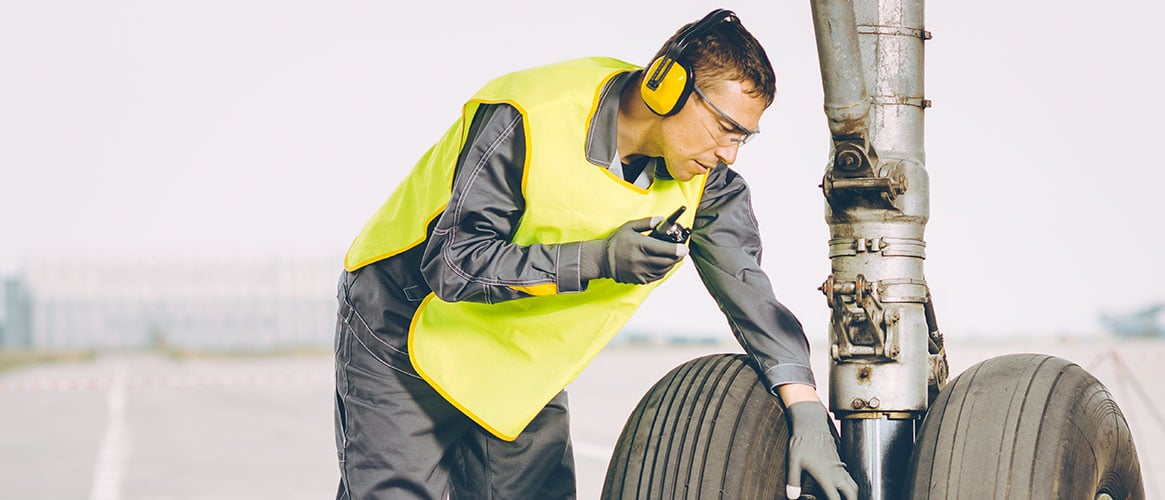Aircraft maintenance work includes inspection and repair of aircraft structures, coatings, and systems in hangars and on the air field. Good training and work practices ensure aircraft and worker safety. Tall, heavy aircraft make it hard to see people on the ground when maneuvering in the hangar or maintenance area.
Watch and communicate with the aircraft operator to avoid caught/crush accidents (getting run over by a tire or colliding with a wing or tail). Never enter the ramp or flight line without permission from the air field controller.
Work at a steady pace. Rushing your work increases aircraft turnaround and accidents. To avoid a fall, watch for ground lines to the aircraft. Well-lit work areas are safer. Watch sharp leading edges like wing tips and pointy antennas, probes, and “Remove Before Flight” flags that stick out from the aircraft. Colliding with hard, sharp surfaces or protrusions causes bumps, bruises, and cuts.
Stay inside painted hazard lines and keep clear of aircraft prop arcs. Contact with a propeller, rotor, or exposed rotating part can cause severe injuries. Keep hair tied back and avoid loose clothing and jewelry to prevent entanglement with moving parts. Don’t lean on or place your hands or feet near engine intake areas. Keep tools away and pick up debris near the engine. If an engine starts, you could be severely injured, or small items could be turned into projectiles.
Tall aircraft require ladders, platforms, and scaffolds to reach work areas. Follow ladder safety guidelines. Use a fall protection harness where required. You may need to work in cramped quarters while performing aircraft maintenance. Evaluate aircraft access areas and job tasks with limited egress and follow confined space procedures if needed.
Aircraft chemicals include lubricants, fuels, coating strippers, paints, and solvents. These can be concentrated and contain hazardous materials; use safety data sheets (SDS). The SDS explains how to handle chemicals, proper storage and disposal, and the required personal protective equipment (PPE) for safe work. Do not smoke around aircraft maintenance areas where chemicals and fuels are flammable.
Fabrication and repair work requires tools such as welding torches, drills, rivets, or grinders. Properly maintain your tools and follow safety procedures. When moving large, bulky aircraft parts and materials, use assistive devices or get help to make the lift safe. Use good ergonomic practices such as frequent 30-second micro-breaks and job task rotation to prevent fatigue and injury.
PPE varies with the job task. Bump caps protect you from an accidental collision with an aircraft part. Hard hats protect you from falling objects. Safety glasses, a face shield, and goggles protect your face and eyes, depending on the task and materials. Coveralls and rubber gloves and boots protect your hands and feet from chemicals. Sturdy work gloves protect your hands from cuts and scrapes while steel-toe work boots with non-slip soles protect your toes and decrease the chance of falls. Wear adequate hearing protection (ear plugs, muffs, etc.) to protect you from aircraft noise. A respirator may be needed to control dusts from grinding and sanding operations.
